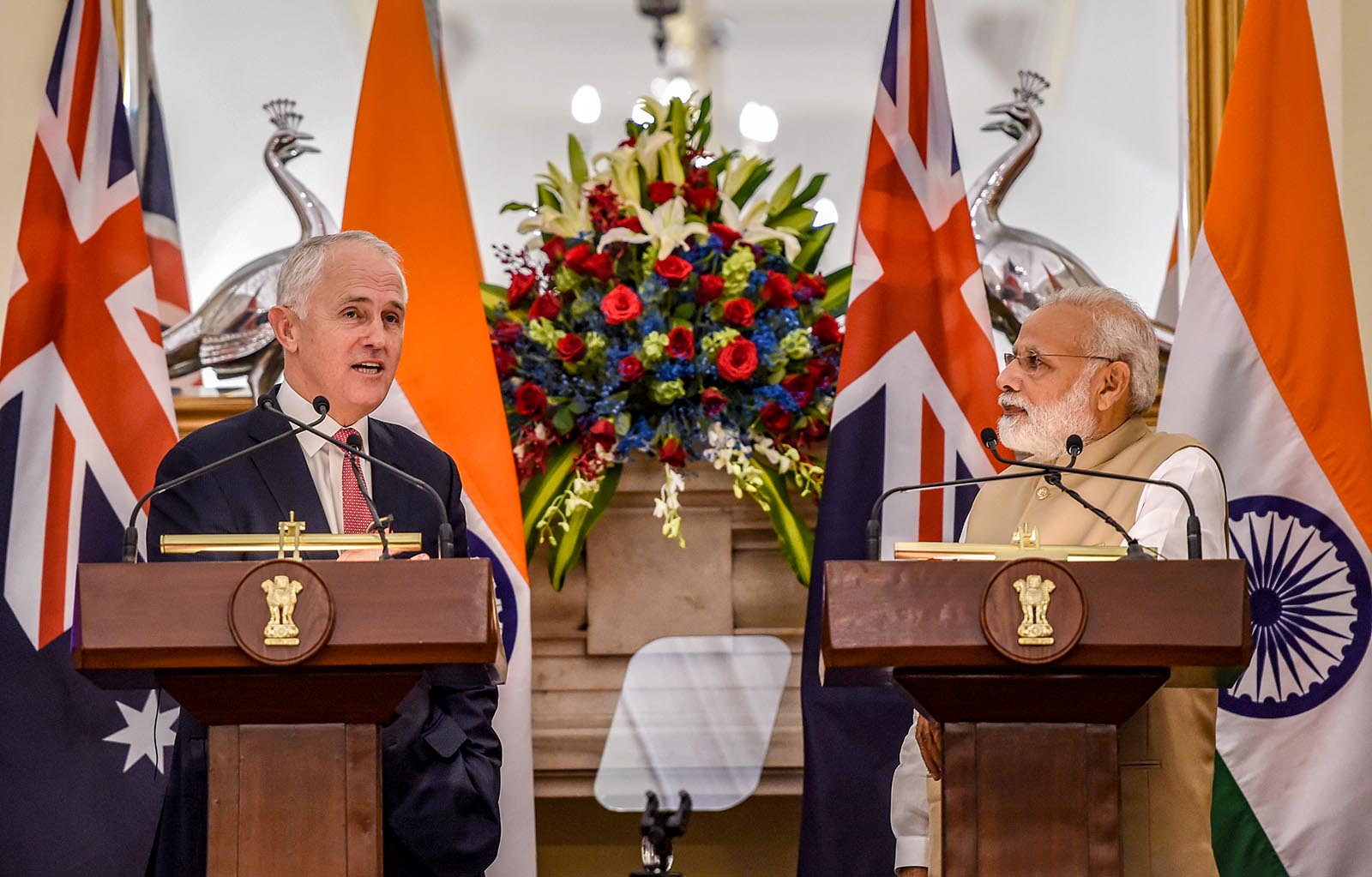Rethinking Australia’s Relationship with India

Indian Prime Minister Narendra Modi (R) looks on as Australian Prime Minister Malcolm Turnbull speaks during a joint press briefing in New Delhi in 2017.
Photo: Money Sharma/AFP/Getty Images
By 2060, India may be the world’s largest economy. It will certainly be the world’s most populous country. At that point, Australians will ask, “What did we do in the 2020s to build a relationship with this superpower?” They may also ask: “How did economic cooperation with India benefit both countries in the early 21st century?”
The federal government’s report, An India Economic Strategy to 2035, was launched in July in Brisbane. Written by University of Queensland Chancellor Peter Varghese, it is an excellent basis for reflecting on these questions and the wider issue of Australia–India cooperation.
The strategy identifies numerous sectors—health, education, and tourism, for example—that can help enhance economic cooperation, and in which Australia has some comparative advantage. It also specifies 10 Indian states as targets for collaboration based on their economic heft, commitment to reform, and relevance to the sectors in which Australia has competitive advantages.
Importantly, the strategy is ambitious. It sets itself the goal by 2035 to lift India into Australia’s top three export markets. It intends for India to become “the third largest destination in Asia for Australian outward investment,” and for it to be brought “into the inner circle of Australia’s strategic partnerships.”
The strategy emphasises two areas that need attention in order to meet these objectives. First, Australia needs to leverage the strengths of the Indian diaspora, which now numbers about 455,000.
The rapid growth of the Indian diaspora population can be a spur to economic cooperation. The Indian population in places such as Silicon Valley drive the IT and biotech booms in India, and the U.S. and Canada are highly adept in enrolling their Indian diaspora in projects of national and international development.
The rapid growth of the Indian diaspora population can be a spur to economic cooperation.
Second, Australia needs to build more knowledge of India and support organizations that work on the bilateral relationship. While Australia made a pivot toward China in the last quarter of the 20th century, businesses, governments, and the public developed comparatively little knowledge about India.
The emphasis on China led to a neglect of India in education, media, and the policy sphere. There is a need to rebuild public understanding of India and the institutions that can activate this understanding to achieve lasting impact. Culture and arts will be very important here, both as a sector and enabler—points implicit in the strategy.
Mr. Varghese says we need to move beyond constantly drawing comparisons between India and China. “India … will not be the next China,” he writes. India is a distinct opportunity for engagement that merits discussion in its own terms.
The base from which Australia is working with respect to cooperation is certainly different: Australian exports to India are less than a sixth of those to China.
Two further issues will be crucial for the strategy’s successful implementation. The first concerns the relationship between growth and well-being. It is clear that the India Economic Strategy imagines not only enhanced cooperation as a basis for economic growth as such, but also higher standards of living.
There is a need to reflect carefully here. We must think not only about spurring growth in the Australian and Indian economies, but also ensuring that growth is meaningful in four ways: that it addresses social and economic inequalities, creates jobs, is environmentally sustainable, and fosters opportunities to lead fulfilling social and cultural lives.
This is where the comparison between India and China is important. Since 2000, India’s economic growth has been not much more than half as effective at lifting people out of poverty as China’s economic growth. This means that for every 1 of percent growth in gross democratic product in China, nearly twice as many people are elevated out of income poverty as in India. This partly reflects the depth of social inequalities in India.
This piece originally appeared on The Conversation.




